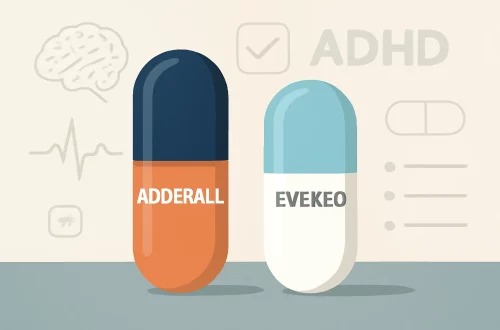
Discover the Best Legacy Pickleball Paddle for Ultimate Performance
The popularity of pickleball has surged in recent years, making it one of the fastest-growing sports in the world. Combining elements of tennis, badminton, and table tennis, the game is accessible to players of all ages and skill levels. As more enthusiasts flock to the courts, the significance of choosing the right equipment has become increasingly apparent. Among the most crucial items players need is a high-quality paddle.
The right paddle can enhance your performance, improve your control, and increase your power during gameplay. With numerous brands and models available, it can be overwhelming to navigate through the options. Each paddle is designed with specific features that cater to different playing styles, making it essential to find one that aligns with your unique preferences.
Factors such as weight, grip size, and material composition play pivotal roles in determining which paddle will best suit your needs. As you explore the world of pickleball paddles, understanding these elements will empower you to make an informed decision. This exploration is not just about selecting a piece of equipment; it’s about enhancing your overall experience on the court and maximizing your potential as a player. Let’s dive deeper into the characteristics that define the best legacy pickleball paddles for ultimate performance.
Understanding Paddle Materials and Their Impact
When it comes to pickleball paddles, materials significantly influence performance, durability, and feel. The most common materials used in paddle construction include wood, composite, and graphite. Each type offers distinct advantages and disadvantages, tailored to different playing styles.
Wood paddles are typically the most affordable option. They are heavier than their composite and graphite counterparts, which can provide more power but less maneuverability. Wood paddles are great for beginners who are just starting and want a sturdy option that can withstand rough play. However, as players advance, they often seek lighter paddles that allow for quicker reactions and better control.
Composite paddles are a popular choice among intermediate and advanced players. They are made from a blend of materials, usually featuring a core made of polymer, honeycomb, or foam, combined with a durable outer layer of fiberglass or carbon fiber. This construction allows for a balance of power and control, enhancing the player’s ability to perform various shots. Composite paddles can also come in different weights, allowing players to choose one that matches their strength and playing style.
Graphite paddles are the lightest and often the most expensive option. They provide excellent touch and control, making them ideal for players who prioritize finesse and precision in their game. The lightweight nature of graphite paddles enables players to react quickly and execute rapid movements. However, they can be more susceptible to damage if not handled carefully.
Understanding the materials used in paddle construction can significantly impact your performance on the court. Choosing the right material that aligns with your skill level and playing style is essential for maximizing your gameplay experience.
Weight and Balance: Finding Your Perfect Paddle
The weight and balance of a pickleball paddle play a crucial role in how it feels during play. Paddles typically range from light (6-7.5 ounces) to heavy (7.5-9 ounces). Lightweight paddles provide excellent maneuverability, enabling quick wrist movements and swift reactions, which is particularly beneficial for net play. However, they may sacrifice some power due to reduced mass.
On the other hand, heavier paddles can generate more power on strokes, making them suitable for players who prefer to hit with greater force. The increased weight can also provide more stability during play, especially when returning powerful shots. However, the trade-off is that heavier paddles may lead to quicker fatigue, particularly if a player is not accustomed to the additional weight.
Balance is another critical aspect to consider. Paddles can be head-heavy, evenly balanced, or handle-heavy. Head-heavy paddles provide more power due to their mass being concentrated toward the hitting surface, which can aid in delivering powerful shots. Conversely, handle-heavy paddles offer better control and maneuverability, making them suitable for players who rely on finesse and quick reactions.
Finding the right combination of weight and balance is essential for optimal performance. It’s advisable to try out different paddles to determine which weight class feels most comfortable and allows you to play effectively without compromising your stamina or control during extended matches.
Grip Size: The Key to Comfort and Control
Grip size is often an overlooked factor when choosing a pickleball paddle, yet it can significantly influence comfort and performance. A proper grip size allows players to maintain control over their paddle, reducing the risk of mishits and enhancing overall gameplay.
Grip sizes are generally categorized into small, medium, and large options. A grip that is too small can cause excessive wrist movement, leading to strain and discomfort. Conversely, a grip that is too large can hinder a player’s ability to maneuver the paddle effectively, impacting control during shots.
To determine the ideal grip size, players can use a simple test. Hold the paddle with your dominant hand and extend your index finger. If your finger touches the base of your palm, the grip is likely the correct size. If there is excessive space, you may need a smaller grip; if it’s difficult to fit your finger, a larger grip may be necessary.
Additionally, players can modify grip size through the use of grip tape or by adding overgrips. These adjustments can provide extra cushioning and help achieve a more comfortable fit. Investing time in finding the right grip size can significantly enhance your playing experience, allowing you to focus on your strategy rather than discomfort.
Performance Features: What to Look For
When selecting a legacy pickleball paddle, it’s essential to consider various performance features that can enhance your gameplay. These features often differentiate high-quality paddles from standard ones, providing players with a competitive edge.
One of the most important features is the paddle’s sweet spot, which is the area on the paddle that delivers the best performance when striking the ball. A larger sweet spot allows for more forgiving shots, making it easier for players to achieve consistent results, even when striking the ball off-center. Many advanced paddles are designed with technology that enhances the size and responsiveness of the sweet spot.
Another feature to look for is the paddle’s edge guard. A durable edge guard protects the paddle from damage during play, particularly when hitting the ground or colliding with other paddles. A robust edge guard can extend the lifespan of your paddle and maintain its performance.
Additionally, some paddles come with textured surfaces that enhance spin. This feature can allow players to add more spin to their shots, which can be advantageous in competitive play. Textured surfaces can create more friction when hitting the ball, resulting in improved control over spin and trajectory.
Lastly, consider the paddle’s design and aesthetics. While this might seem less critical, a paddle that you love to look at and feel can boost your confidence on the court. Whether you prefer a sleek, minimalistic design or vibrant colors, choosing a paddle that reflects your personality can enhance your overall experience.
In conclusion, selecting the best legacy pickleball paddle involves understanding various aspects such as materials, weight, balance, grip size, and performance features. By carefully considering these factors, players can enhance their gameplay and enjoy a more fulfilling experience on the court. Remember, the right equipment is not just about performance; it’s about finding the paddle that feels right for you and complements your unique playing style.
This article is for informational purposes only and should not be considered medical advice. For any health-related concerns, please consult a qualified healthcare professional.




